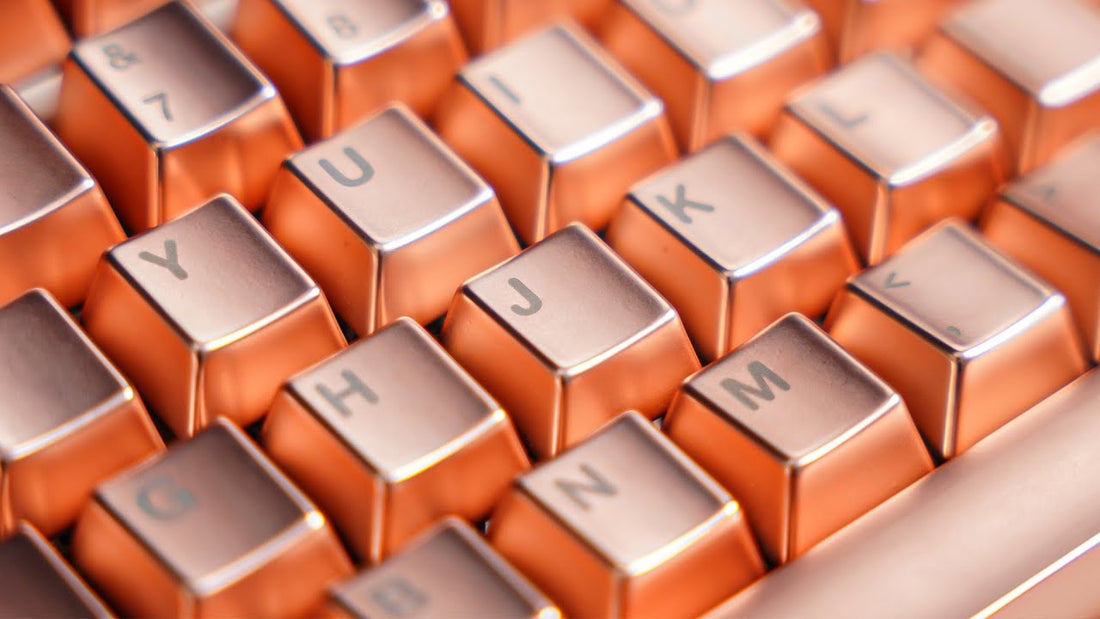In the realm of keyboard customization, metal and ceramic keycaps stand out as premium options, each offering unique characteristics and enhancing the typing experience. This article aims to delineate the disparities between metal and ceramic keycaps, elucidating their impact on sound, durability, aesthetics, and compatibility.
Metal Keycaps

Crafted from durable metal, metal keycaps exude a contemporary, industrial allure while boasting remarkable resilience. Here are the defining attributes of metal keycaps:
-
Durability: Metal keycaps are renowned for their longevity, capable of withstanding extensive use without succumbing to wear and tear.
-
Aesthetic Appeal: Sporting a sleek, modern appearance, metal keycaps add a touch of sophistication to keyboards, appealing to enthusiasts of contemporary design.
-
Tactile Satisfaction: Typing on metal keycaps imparts a solid, satisfying feel, elevating the typing experience for users.
-
Versatility: Metal keycaps boast strong compatibility, suitable for both ANSI and ISO layouts, with options available for a 7U spacebar.
Ceramic Keycaps
Crafted from delicate ceramic materials, ceramic keycaps offer unique qualities, including superior insulation and a softer sound profile. Here are the primary features of ceramic keycaps:
-
Fragility: In contrast to their metal counterparts, ceramic keycaps are prone to breakage due to their fragile nature, necessitating careful handling.
-
Insulation Properties: Ceramic keycaps excel in insulation, providing warmth during colder seasons, making them ideal for winter use.
-
Limited Layout Support: Ceramic keycaps may have limited layout support, often lacking compatibility with ISO Enter and 7U spacebar layouts.
Sound Variation

Both metal and ceramic keycaps alter the sound of keystrokes, offering a more pleasing auditory experience compared to plastic keycaps. Metal keycaps produce a deep, resonant sound, while ceramic keycaps emit a softer, more muted tone.
Conclusion
Metal and ceramic keycaps cater to distinct preferences and needs, with metal keycaps excelling in durability, compatibility, and a modern aesthetic, while ceramic keycaps offer insulation and a softer sound profile. Understanding these discrepancies empowers users to make informed decisions when customizing their keyboards to suit their preferences and usage scenarios. Whether prioritizing durability, aesthetics, or sound quality, both metal and ceramic keycaps provide compelling options for keyboard aficionados.

